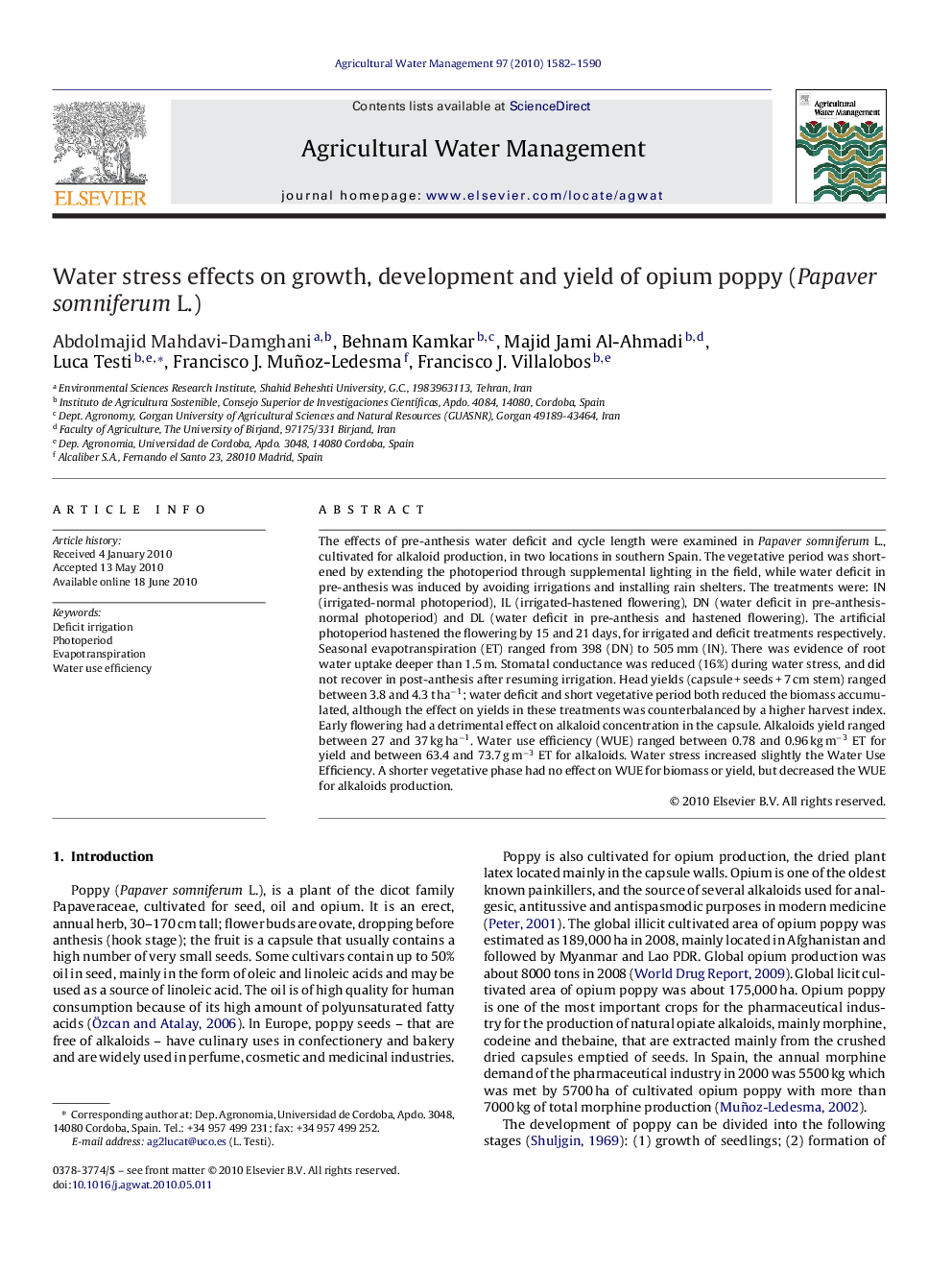| Article ID | Journal | Published Year | Pages | File Type |
|---|---|---|---|---|
| 4479720 | Agricultural Water Management | 2010 | 9 Pages |
The effects of pre-anthesis water deficit and cycle length were examined in Papaver somniferum L., cultivated for alkaloid production, in two locations in southern Spain. The vegetative period was shortened by extending the photoperiod through supplemental lighting in the field, while water deficit in pre-anthesis was induced by avoiding irrigations and installing rain shelters. The treatments were: IN (irrigated-normal photoperiod), IL (irrigated-hastened flowering), DN (water deficit in pre-anthesis-normal photoperiod) and DL (water deficit in pre-anthesis and hastened flowering). The artificial photoperiod hastened the flowering by 15 and 21 days, for irrigated and deficit treatments respectively. Seasonal evapotranspiration (ET) ranged from 398 (DN) to 505 mm (IN). There was evidence of root water uptake deeper than 1.5 m. Stomatal conductance was reduced (16%) during water stress, and did not recover in post-anthesis after resuming irrigation. Head yields (capsule + seeds + 7 cm stem) ranged between 3.8 and 4.3 t ha−1; water deficit and short vegetative period both reduced the biomass accumulated, although the effect on yields in these treatments was counterbalanced by a higher harvest index. Early flowering had a detrimental effect on alkaloid concentration in the capsule. Alkaloids yield ranged between 27 and 37 kg ha−1. Water use efficiency (WUE) ranged between 0.78 and 0.96 kg m−3 ET for yield and between 63.4 and 73.7 g m−3 ET for alkaloids. Water stress increased slightly the Water Use Efficiency. A shorter vegetative phase had no effect on WUE for biomass or yield, but decreased the WUE for alkaloids production.
